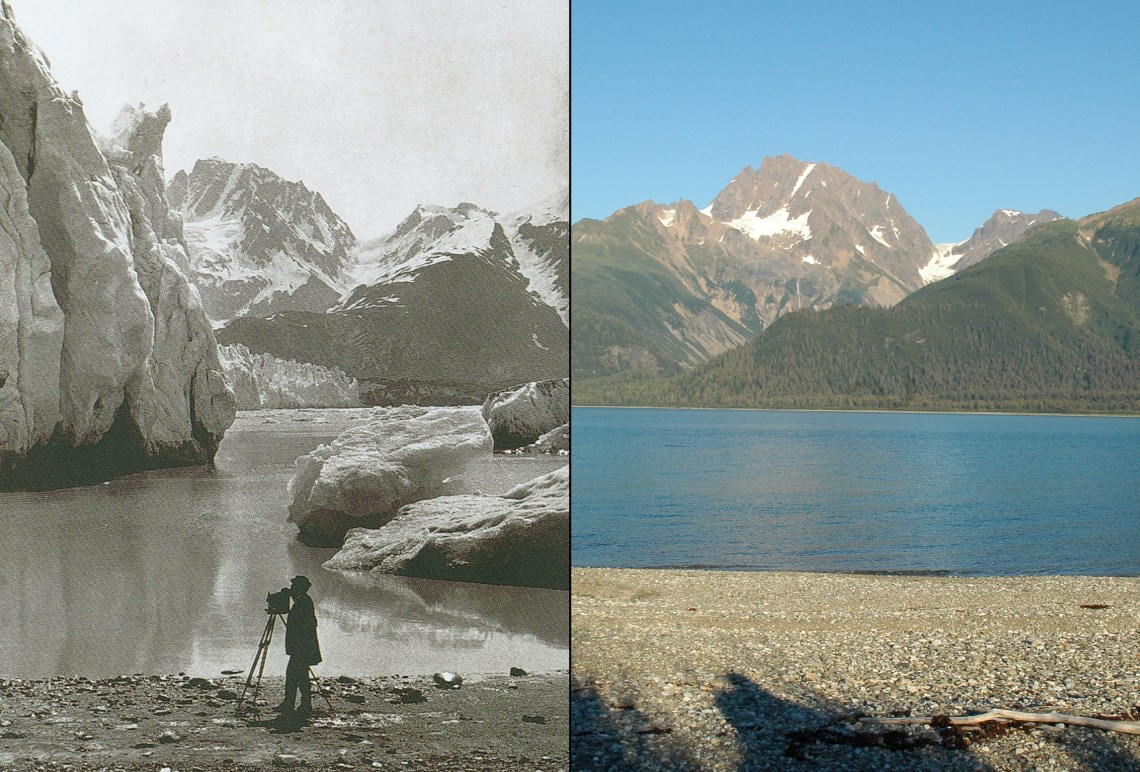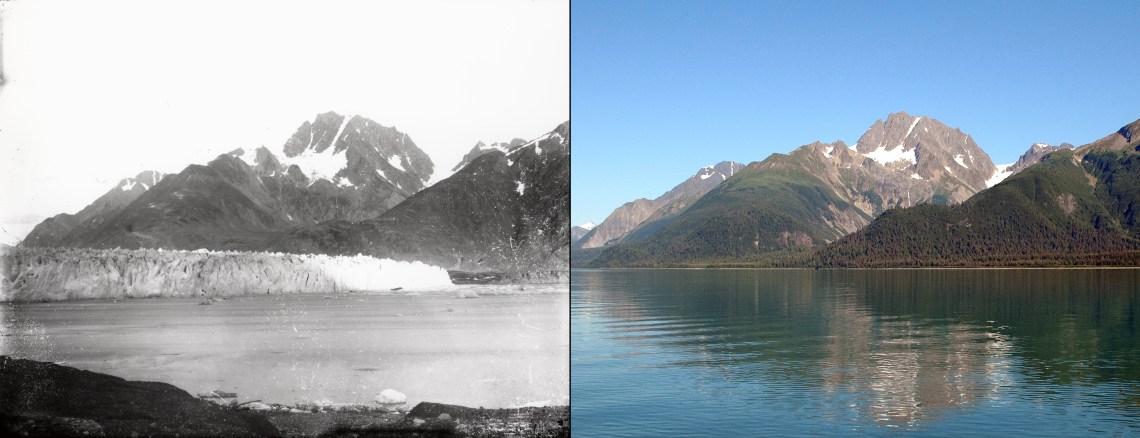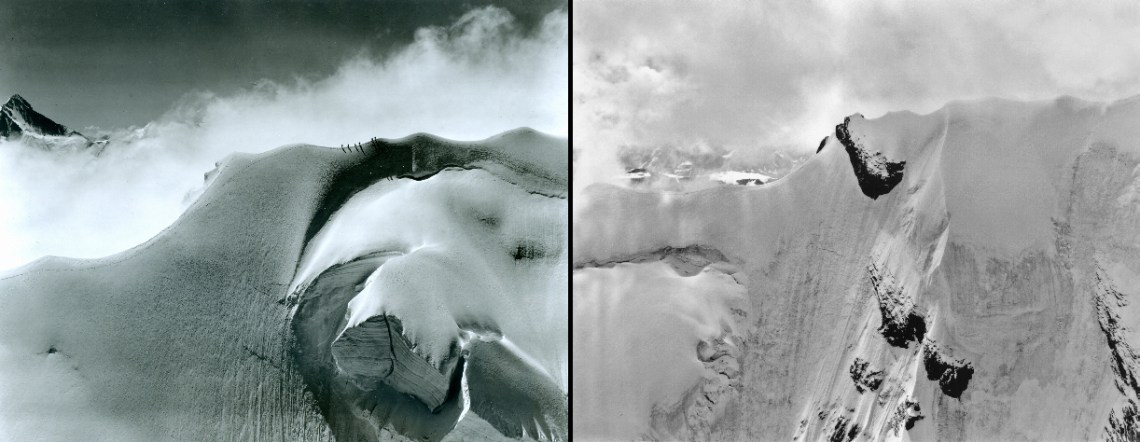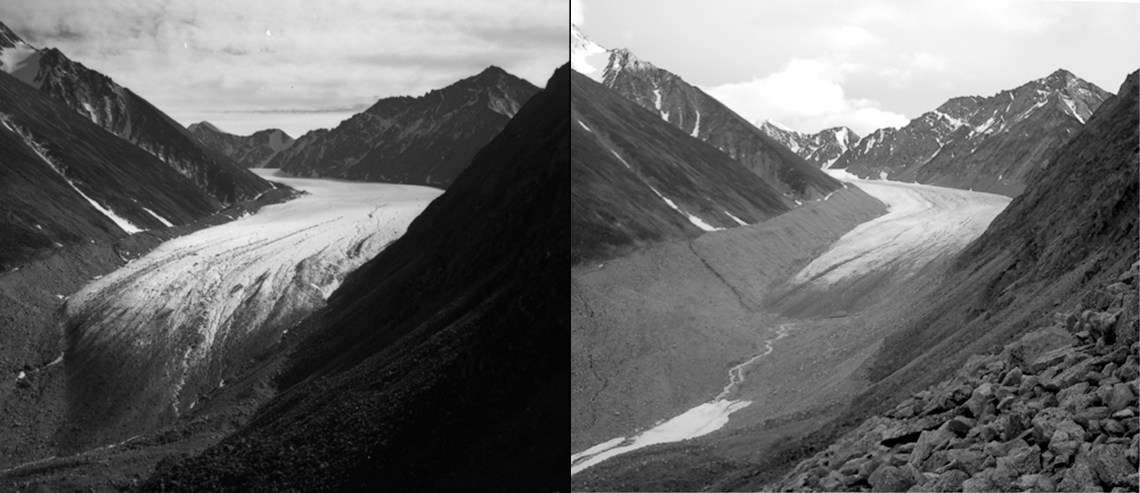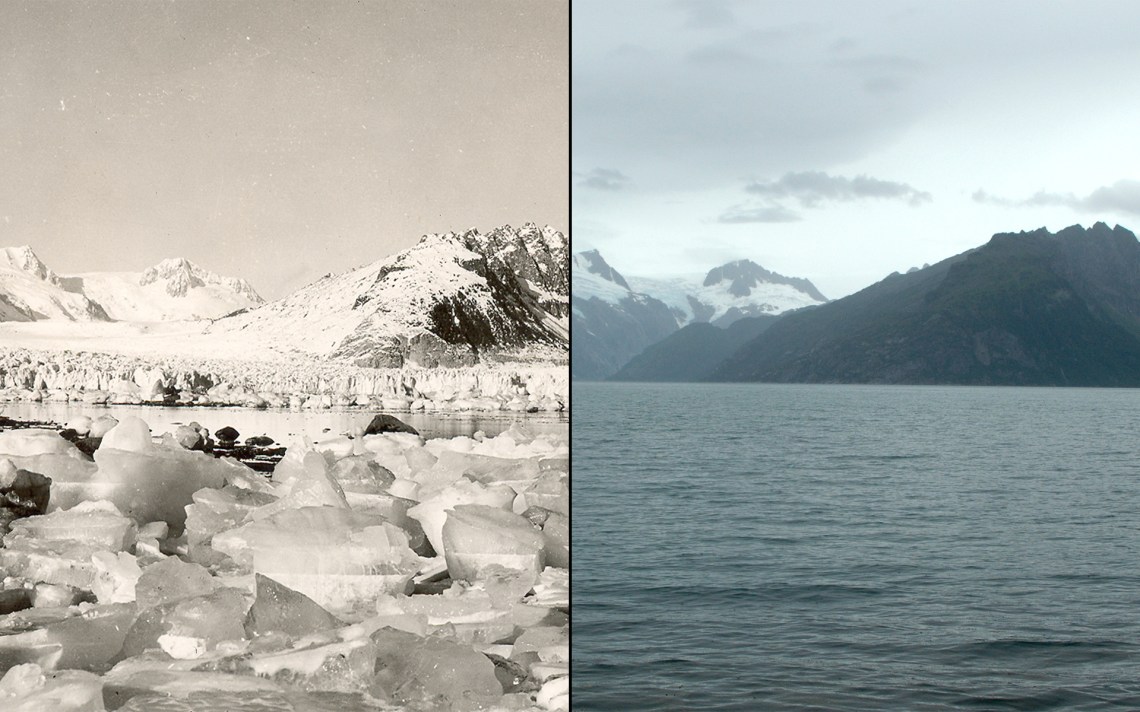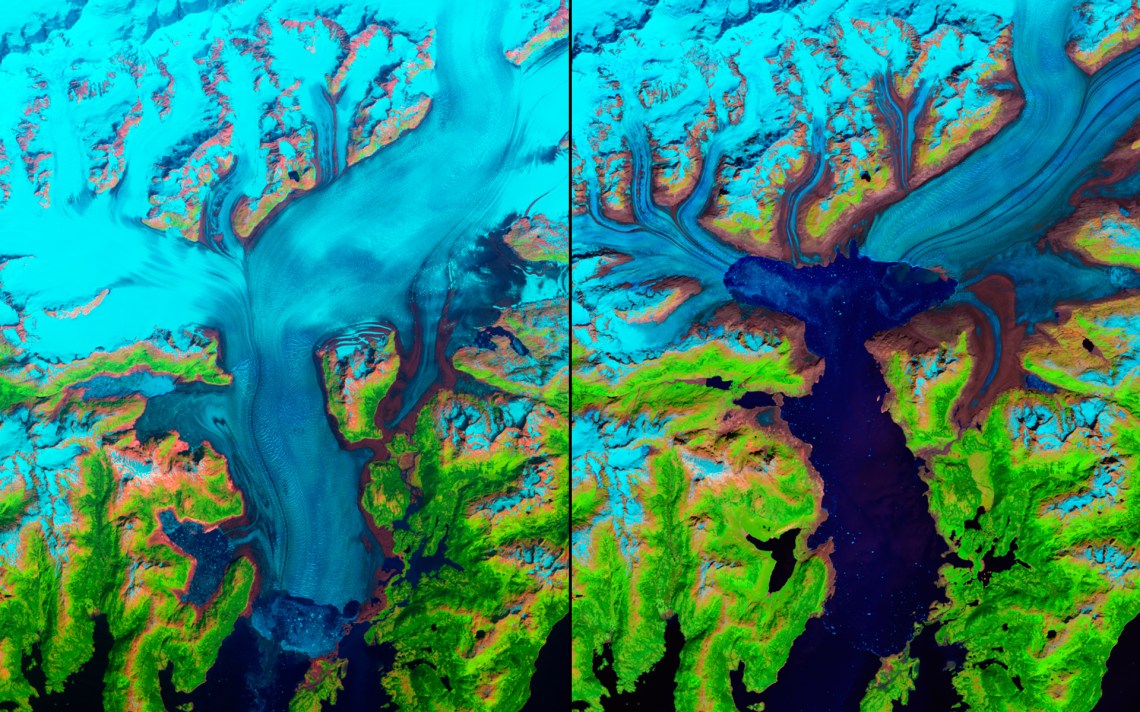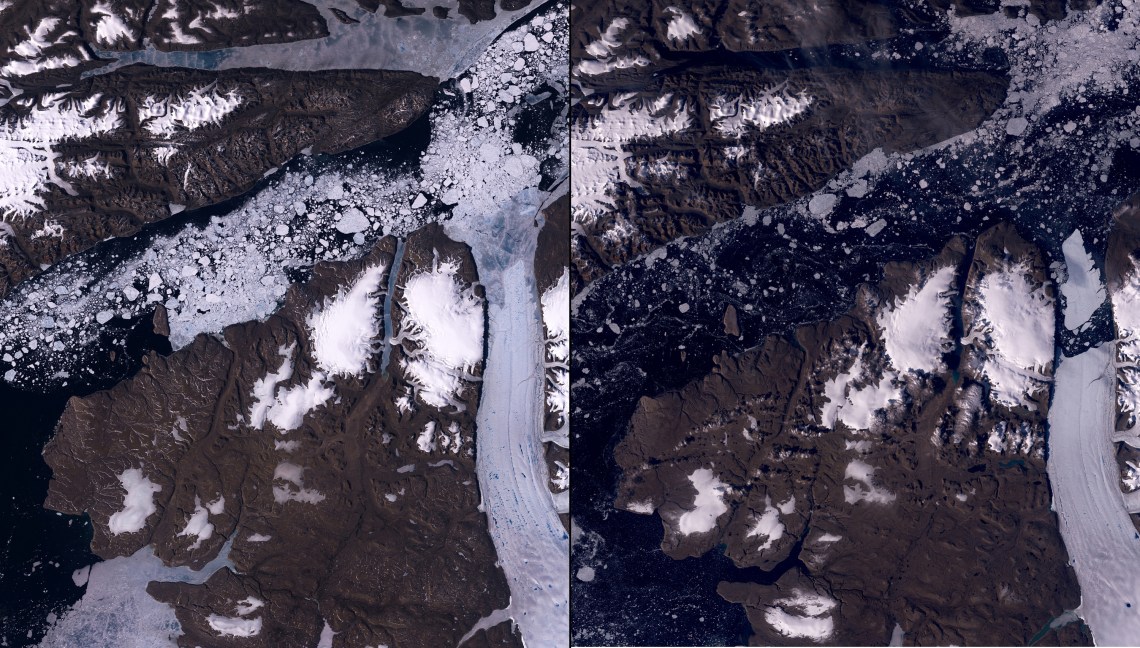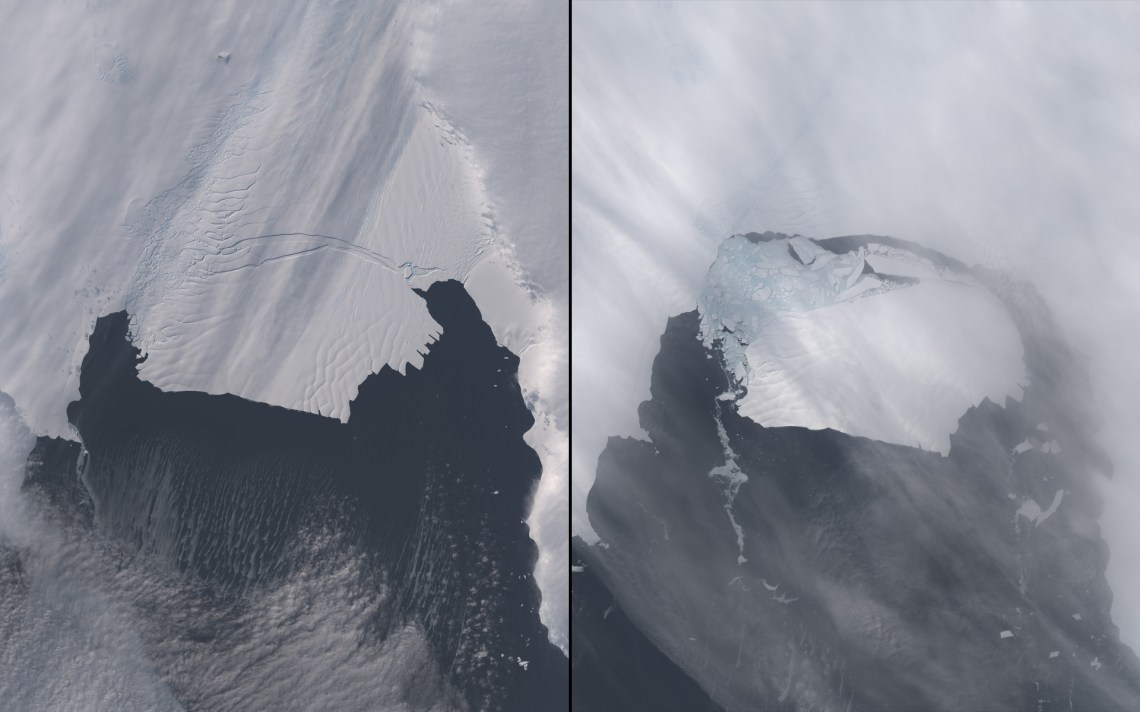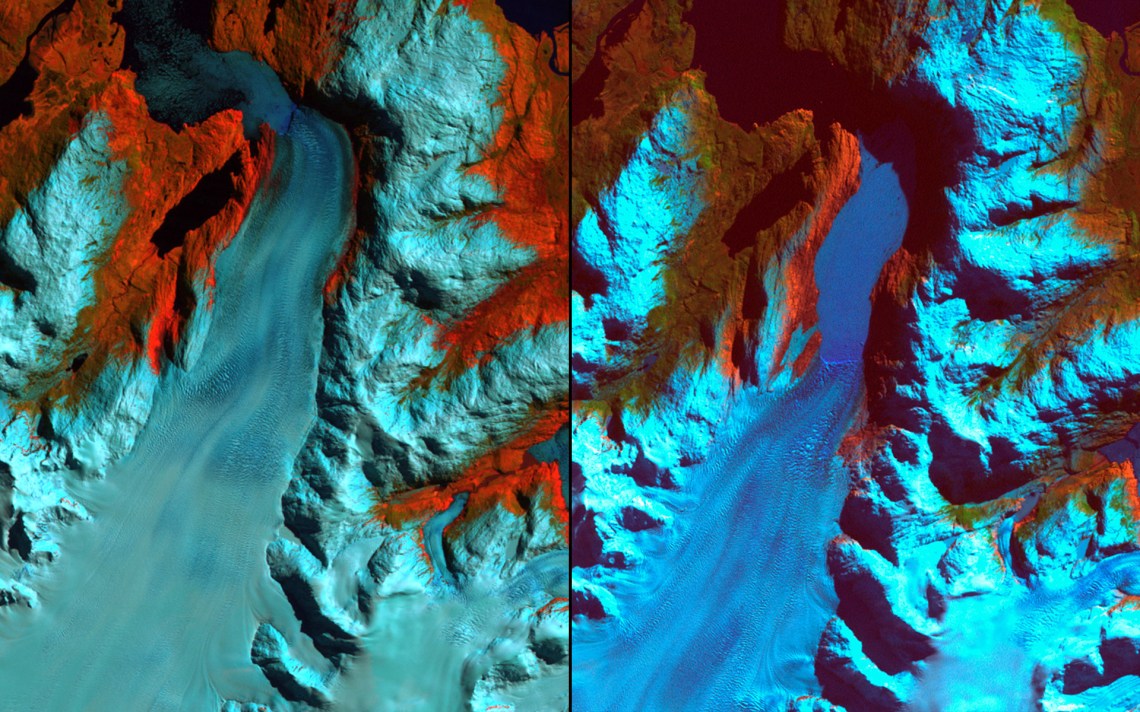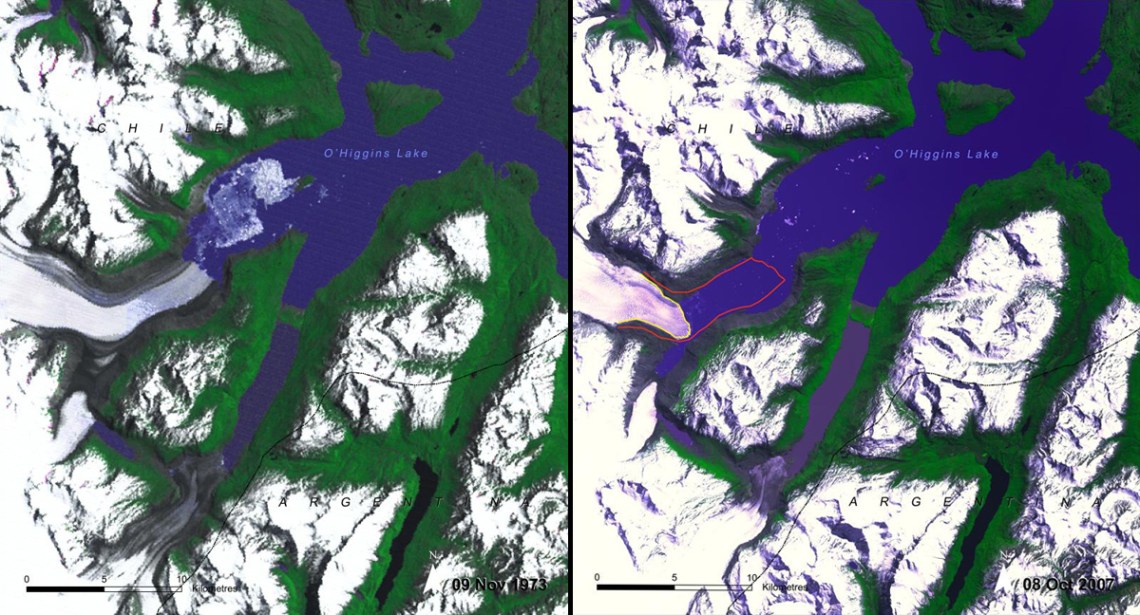NASA has recently posted hundreds of satellite images and photographs taken over a 100 year period comparing modern weather patterns, ice coverage, and population growth all over the world with their counterparts in the 1900s. The contrast is, in many cases, stunning. Here is a selection from Images of Change
Caption text courtesy NASA.
Okpilak Glacier, Alaska. Left: June 1907. Right: August 5, 2004 Imja Glacier in the Himalayas. Left: Circa 1956, autumn. Right: October 18, 2007. These images show the glacier as seen from the upper slopes of Island Peak. The after shot shows pronounced retreat and collapse of the lower tongue of the glacier and formation of new melt ponds. Muir Glacier, Alaska. Left: 1891. Right: 2005. Muir Glacier, Alaska. Left: September 2, 1892. Right: August 8, 2005. Global temperature changes. Left: 1880-1889. Right: 2000-2009. These maps compare temperatures in each region of the world to what they were from 1951 to 1980…Earth’s average surface temperature has increased by about 0.7 °C (1.3 °F) since 1880. Two-thirds of the warming has occurred since 1975, at a rate of roughly 0.15 to 0.20 °C per decade. The Doldenhorn mountain, North East Ridge, Switzerland. Left: July 24, 1960, 10.40 am. Right: July 27, 2007, 10.44 am. McCall Glacier, Alaska. Left: July 1958. Right: August 14, 2003. Northwestern Glacier. With few exceptions, glaciers around the world have retreated at unprecedented rates over the last century. Alaska’s Columbia Glacier descends through the Chugach Mountains into Prince William Sound. When British explorers surveyed the glacier in 1794, its nose extended to the northern edge of Heather Island, near the mouth of Columbia Bay. The glacier held that position until 1980, when it began a rapid retreat. The glacier has thinned so much that the up and down motion of the tides affects its flow as much as 12 kilometers (7.5 miles) upstream, until the glacier bed rises above sea level and the ice loses contact with the ocean. Helheim Glacier melt, Greenland Left: May 12, 2001. Middle: July 7, 2003. Right: June 19, 2005. Along the margin of the Greenland Ice Sheet, outlet glaciers flow as icy rivers through fjords and out to sea. These pictures show a fjord in which Helheim Glacier (on the left) is crumbling into large and small icebergs (light blue, on the right). Ice melt, Greenland Warming Island, Greenland. Left: August 11, 1985. Center: September 5, 2002. Right: September 4, 2005. On January 16, 2007, the New York Times reported that a new island had been found in Greenland. Warming Island was thought to be an ice-covered peninsula, but it was exposed as an island in 2005, when an ice bridge melted to reveal an open-water strait. More islands like this may be discovered if the Greenland ice sheet continues to disappear. Petermann Glacier, Greenland. Left: June 26, 2010. Right: August 13, 2010. An iceberg more than four times the size of Manhattan broke off the Petermann Glacier (the curved, nearly vertical stripe stretching up from the bottom right of the images) along the northwestern coast of Greenland. Warmer water below the floating ice and at the sea’s surface were probably responsible for the break. Left: Nov. 11, 1973; Right: Nov. 10, 1986 The Filchner Ice Shelf, on the Antarctic coast facing the Atlantic Ocean, is the largest ice shelf by volume on Earth. In the austral winter of 1986, its front edge broke off, forming three large icebergs. This was a major, long-awaited calving. Ice shelves develop mainly from glaciers flowing slowly downhill toward the ocean. An iceberg estimated to be 35 by 20 kilometers (22 by 12 miles) separated from Antarctica’s Pine Island Glacier between November 9 and 11, 2013. Such events happen about every five or six years but this iceberg, designated “B-31,” is about 50 percent larger than its predecessors in this area. A team of scientists from Sheffield and Southampton universities will track the 700 square-kilometer chunk of ice and try to predict its path using satellite data. Patagonia, Chile. Left: September 18, 1986. Right: August 5, 2002. The 1986 image shows the region prior to a major retreat of the glaciers. The 2002 image shows a retreat of nearly 10 kilometers (6.2 miles) of the glacier on the left side. The smaller glacier on the right has receded more than 2 kilometers (1.2 miles). Almost all the glaciers in the southern Patagonian ice field, in the south of Chile and Argentina, are melting. O’Higgins Glacier, which makes up a quarter of the ice field, is one of those that have changed the most. Its leading edge remained stable until the start of the twentieth century, when it began a retreat that measured 15 kilometers (about 9 miles) by 1995. Some 12 kilometers (over 7 miles) of ice were lost between 1945 and 1980 alone. While some of the reduction in the glacier’s thickness and area is due to the dynamics of the ice itself, global warming speeds up the rate of melting. In the 2007 satellite image, the glacier’s retreat is quite visible relative to the 1973 image, when it extended several kilometers into O’Higgins Lake (purple-blue area).
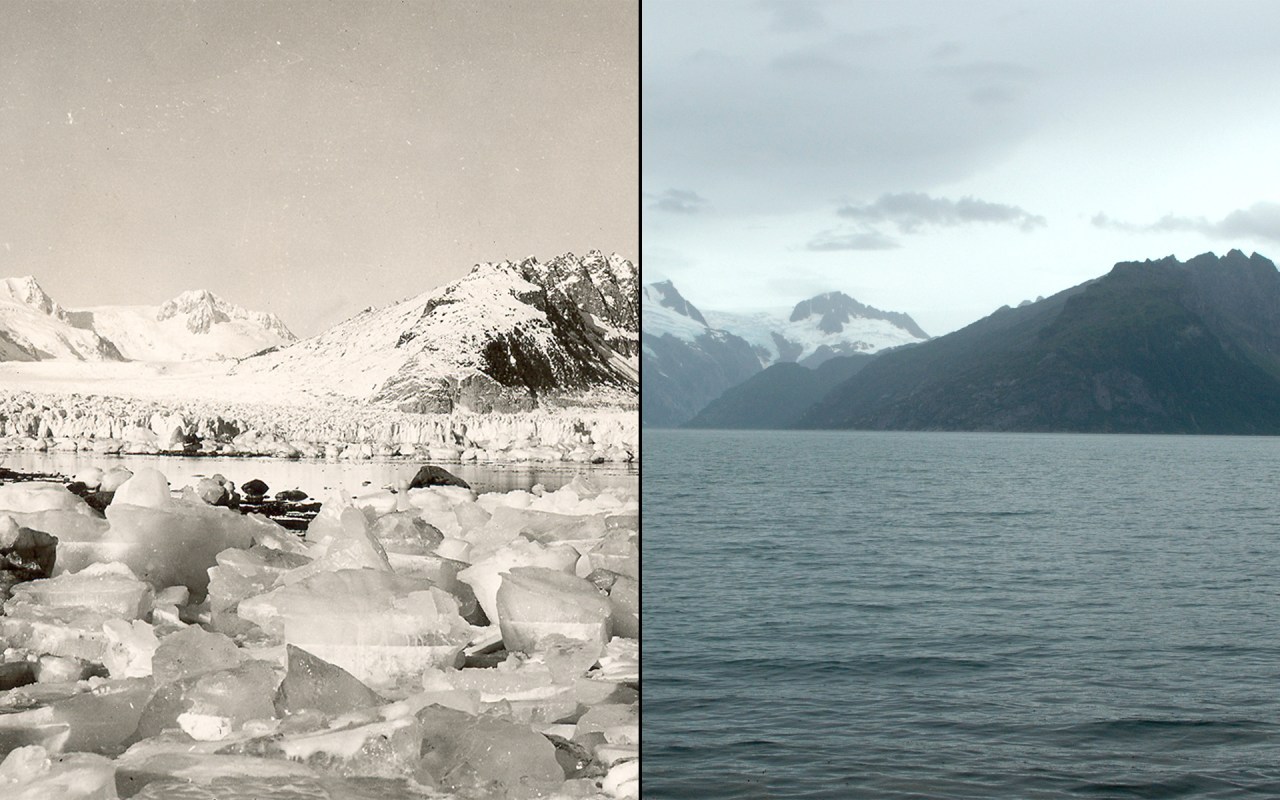
![]()


